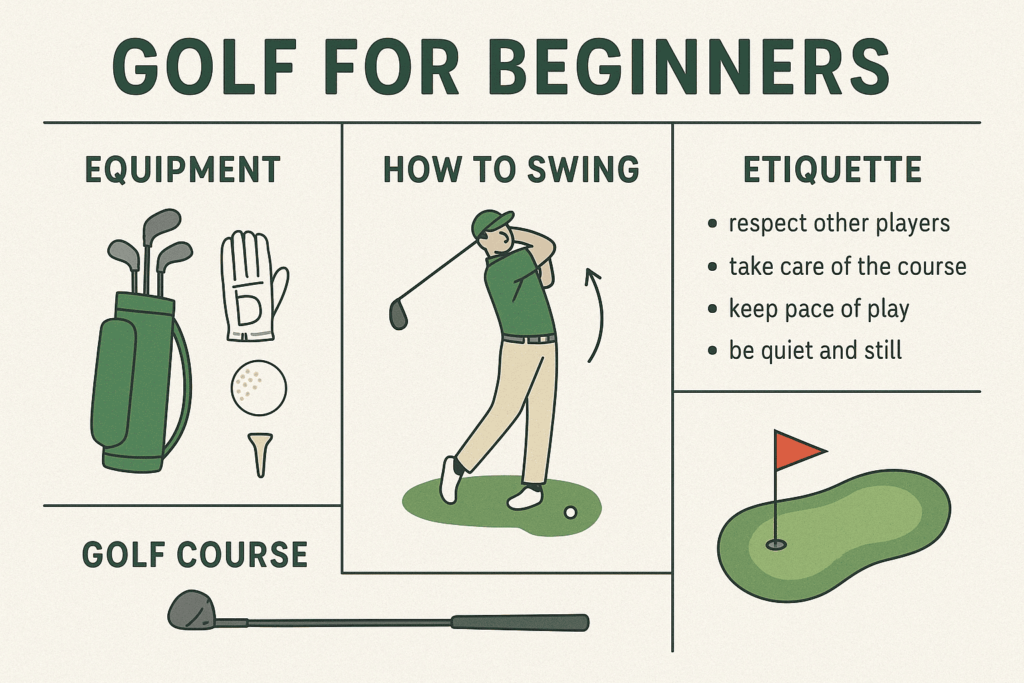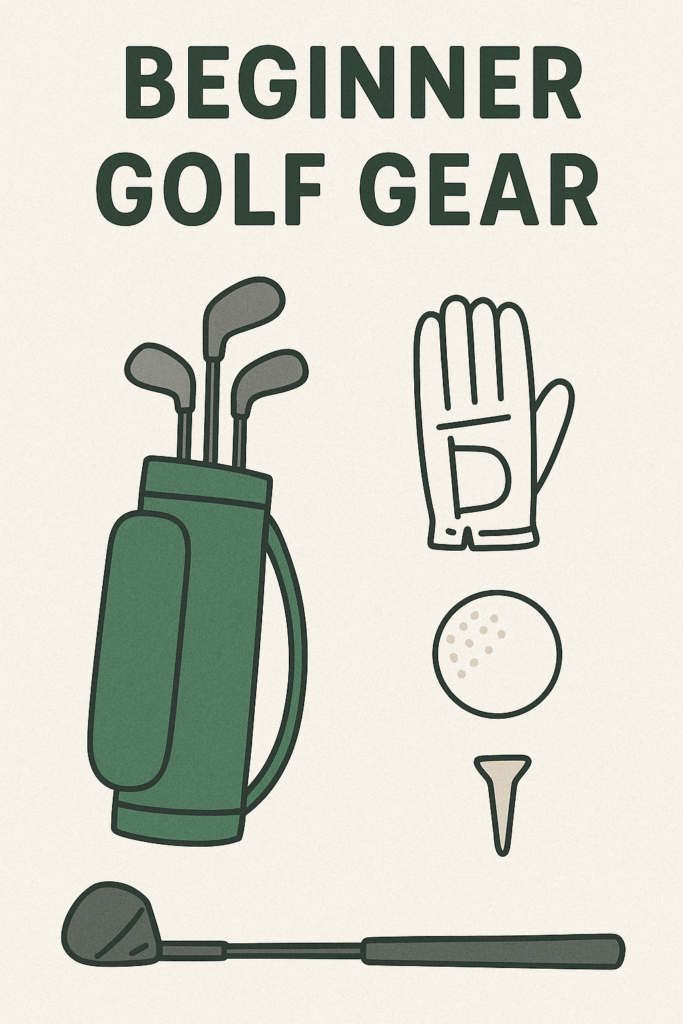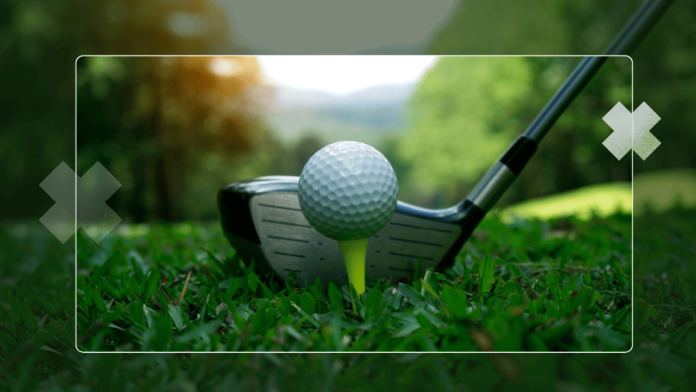Welcome to the world of golf! A sport of precision, patience, and strategy, golf is a fantastic way to stay active, enjoy the outdoors, and socialize — but it’s also one of the most rewarding games you can pick up, regardless of age.
If you’re a beginner looking to learn the basics of golf in 2025, this guide will walk you through everything you need: from rules and equipment to swing techniques, etiquette, and practice strategies, but don’t worry—every pro was once a beginner.
By the time you finish this guide, you’ll have a solid plan to head out onto the golf course and have a blast during your first round.
What is Golf?

Golf is a precision sport where players use various clubs to hit a ball into a series of holes on a course in as few strokes as possible. It’s a game of patience, strategy, and skill — played across lush green landscapes that add a calming yet challenging atmosphere.
Originating centuries ago in Scotland, golf is now played globally, with millions of fans and players across the USA and Europe. Whether you want to play casually on weekends or aim for competition, golf welcomes all skill levels.
Table of Contents
Why Golf is a Great Sport for Everyone
Golf isn’t just a game for retirees or business executives — it’s a lifelong sport with benefits for people of all ages:
- 🧘♂️ Mental Wellness: It promotes focus, patience, and relaxation.
- 🏃 Physical Activity: Walking 18 holes burns calories and builds stamina.
- 🌍 Social Connections: Ideal for making friends and networking.
- 🧠 Skill Development: Enhances strategic thinking and coordination.

Essential Golf Terminology You Should Know
Before hitting the course, get familiar with key golf lingo:
- Par – The expected number of strokes for a hole.
- Birdie – One stroke under par.
- Bogey – One stroke over par.
- Tee – The starting point of a hole.
- Fairway – The short grass between tee and green.
- Green – The putting area near the hole.
- Handicap – A measure of a golfer’s potential to level the playing field.
Golf Equipment for Beginners
You don’t need a full professional setup to begin. Here’s a starter checklist:
🏌️ Golf Clubs (Must-Have)
- Driver – For long-distance shots from the tee.
- Iron Set – Versatile for mid-range shots.
- Putter – Used on the green to sink the ball into the hole.
- Wedges: For short-range accuracy (sand wedge, pitching wedge).
👉 Tip: Many brands offer beginner sets at affordable prices.

🏌️♂️ Accessories
- Golf balls (get a basic 12-pack)
- Tees (plastic or wood)
- Golf glove (for grip and control)
- Golf bag with stand
- Comfortable golf shoes with grip
Golf Balls
- Start with affordable balls since beginners lose many.
- Look for distance balls that help with forgiveness.
Golf Rules & Scoring System
The goal in golf is simple: complete each hole in the fewest strokes possible.
- Stroke Play: Your total strokes across 18 holes determine your score.
- Match Play: Each hole is a separate contest.
Keep in mind:
- Hitting out-of-bounds incurs a penalty.
- You must play the ball where it lies (unless unplayable).
- Etiquette matters — be quiet when others hit, repair divots, and rake bunkers.
The Basic Rules of Golf (Beginner-Friendly)
If golf feels overwhelming, start with the core rules every beginner should know:
- Objective: Hit the ball into the hole in as few strokes as possible.
- Course Layout: A typical course has 18 holes, each with a par (expected strokes).
- Teeing Off: Start each hole from the designated tee area.
- Fairway & Rough: The short grass (fairway) is ideal; the rough is harder to play from.
- Green: The area with the hole where you putt.
- Scoring: Stroke play (total strokes) is the most common format.
- Penalties: Lost ball, out of bounds, or hitting into water usually adds +1 stroke.
Before you hit the fairway, it helps to know a few of the most important rules of golf:
- Play the Ball as It Lies
Don’t move or improve the position of your ball (unless local rules allow). You must play it from where it comes to rest. - Teeing Area
Your first shot on each hole must be played from within the tee markers. You can place your ball up to two club-lengths behind the markers. - Order of Play
On the tee, the player with the lowest score on the previous hole goes first. On the fairway, the ball farthest from the hole is played first. - Lost Ball & Out of Bounds
If you lose your ball or hit it out of bounds, you must take a one-stroke penalty and replay from the spot of your last shot. - Hazards (Bunkers & Water)
You can’t ground your club (rest it) in a bunker before striking the ball. If your ball goes into water, take a penalty stroke and drop it according to the rules. - Putting Green Etiquette
Don’t step on another player’s putting line. Always mark your ball before lifting it, and replace it on the same spot.
Golf Course Basics (Layout, Holes, Par)
A standard golf course has 18 holes with varying lengths and difficulties:
- Par 3: Short hole (less than 250 yards)
- Par 4: Medium hole
- Par 5: Long hole (up to 600+ yards)
Most courses also include:
- Driving range
- Putting green
- Clubhouse with gear, food, and rentals
How to Start Playing: Step-by-Step for Beginners
1. Visit a Driving Range
Practice your swing, get familiar with how clubs feel, and build muscle memory.
2. Take a Golf Lesson
You can:
- Join a group session
- Hire a private instructor
- Use golf apps or YouTube (great for visual learners)
3. Book Your First Tee Time
Look for 9-hole beginner-friendly courses. Many public courses welcome walk-ins or online bookings.
Pro Tip: Call ahead to ask about beginner lessons or starter packs.
Beginner Golf Tips for a Strong Start
- Focus on consistency, not power.
- Don’t worry about score — play for feel.
- Work on putting and short game early on.
- Watch your posture and grip — they matter more than swing speed.
- Stay calm and don’t rush your shots.
Common Mistakes First-Time Golfers Make
Avoid these rookie errors:
- Buying expensive clubs too early
- Ignoring basic rules or etiquette
- Using the wrong club for the shot
- Trying to swing too hard
- Skipping warm-ups and stretches
Remember: Even pros started with missed shots and topped balls.
Golf Etiquette: Do’s & Don’ts for Beginners
Golf is as much about respect as it is about skill. Follow these etiquette rules:
- Don’t talk or move when someone is swinging.
- Repair ball marks on the green.
- Rake bunkers after hitting from the sand.
- Let faster groups play through.
- Dress appropriately (collared shirts, proper shoes).
Beginner Practice Routine (How to Get Better Fast)
Improvement comes with practice. Start with this weekly routine:
- Driving Range (2–3x per week): Work on swing basics.
- Putting Green (2x per week): Spend 50% of practice time putting.
- Short Game Practice: Chipping & pitching drills.
- Play 9 Holes Weekly: Real course experience builds confidence.
Cost of Playing Golf for Beginners (USA, UK, Australia)
- USA: Public course green fees = $20–$50. Premium resorts = $100+.
- UK: Pay-per-play £20–£50; memberships vary £800–£1,500/year.
- Australia: Public courses AU$25–$50; memberships around AU$1,000/year.
👉 Golf doesn’t have to be expensive — start small before investing heavily.
Resources to Learn Golf
- Books: Ben Hogan’s Five Lessons
- YouTube Channels: Rick Shiels, Golf With Aimee
- Apps: Golfshot, Arccos Caddie
- Lessons: PGA-certified coaches
Final Thoughts: Your Golf Journey Begins
Starting golf may feel overwhelming, but with the right guidance, equipment, and patience, you’ll quickly fall in love with the game. Focus on enjoying each shot, learning at your own pace, and connecting with other players.
Whether you’re aiming to lower your handicap, play at a luxury resort, or just enjoy weekends at a local course — this beginner’s guide sets the foundation for your journey.
Do I need lessons to start golf?
Not mandatory, but lessons can speed up your progress and reduce frustration.
How much does it cost to start playing golf?
You can begin with basic gear and local courses for around $200–$400 total.
How long does it take to learn golf?
Most people become confident within 6–12 months with regular play.
Can I play without joining a club?
Yes! Public and municipal courses across the USA and Europe are beginner-friendly.
What equipment do I need to start playing golf?
As a beginner, you only need a few clubs (driver, iron, wedge, and putter), golf balls, tees, and comfortable shoes.
Is golf hard to learn for beginners?
Golf can seem challenging at first, but with the right basics, practice, and patience, beginners can quickly pick up the game.

